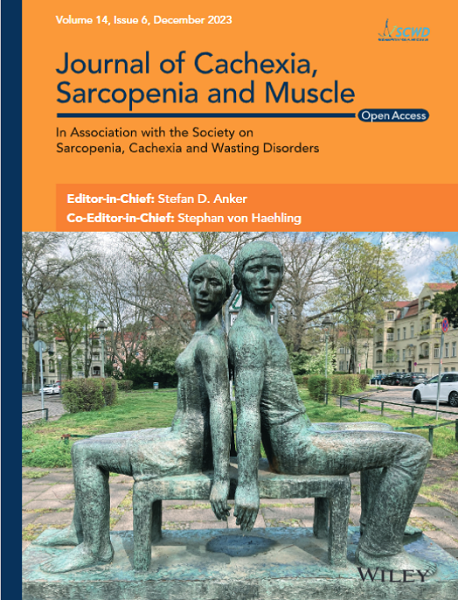Leg Muscle Volume, Intramuscular Fat and Force Generation: Insights From a Computer-Vision Model and Fat-Water MRI
Abstract
Background
Maintaining skeletal muscle health (i.e., muscle size and quality) is crucial for preserving mobility. Decreases in lower limb muscle volume and increased intramuscular fat (IMF) are common findings in people with impaired mobility. We developed an automated method to extract markers of leg muscle health, muscle volume and IMF, from MRI. We then explored their associations with age, body mass index (BMI), sex and voluntary force generation.
Methods
We trained (n = 34) and tested (n = 16) a convolutional neural network (CNN) to segment five muscle groups in both legs from fat-water MRI to explore muscle volume and IMF. In 95 participants (70 females, 25 males, mean age [standard deviation] = 34.2 (11.2) years, age range = 18–60 years), we explored associations between the CNN measures and age, BMI and sex, and then in a subset of 75 participants, we explored associations between CNN muscle volume, CNN IMF and maximum plantarflexion force after controlling for age, BMI and sex.
Results
The CNN demonstrated high test accuracy (Sørensen–Dice index ≥ 0.87 for all muscle groups) and reliability (muscle volume ICC2,1 ≥ 0.923 and IMF ICC2,1 ≥ 0.815 for all muscle groups) compared to manual segmentation. CNN muscle volume was positively associated with BMI across all muscle groups (p ≤ 0.001) but not with age (p ≥ 0.406). CNN IMF was positively associated with age for all muscle groups (p ≤ 0.015), and CNN IMF was positively associated with BMI for all muscle groups (p ≤ 0.043) except the right deep posterior compartment (p = 0.130). Males had greater CNN volume of all muscle groups (p < 0.001) except the left and right gastrocnemius (p ≥ 0.067). Gastrocnemius CNN IMF was greater in females (p ≤ 0.043). Plantarflexion force was positively associated with lateral compartment, soleus and gastrocnemius CNN volume (p ≤ 0.025) but not with CNN IMF (p ≥ 0.358).
Conclusions
Computer-vision models combined with fat-water MRI permits the non-invasive, automatic assessment of leg muscle volume and IMF. Associations with age, BMI and sex are important when interpreting these measures. Markers of leg muscle health may enhance our understanding of the relationship between muscle health, force generation and mobility.
Trial Registration
ClinicalTrials.gov identifier: NCT02157038


 求助内容:
求助内容: 应助结果提醒方式:
应助结果提醒方式:


